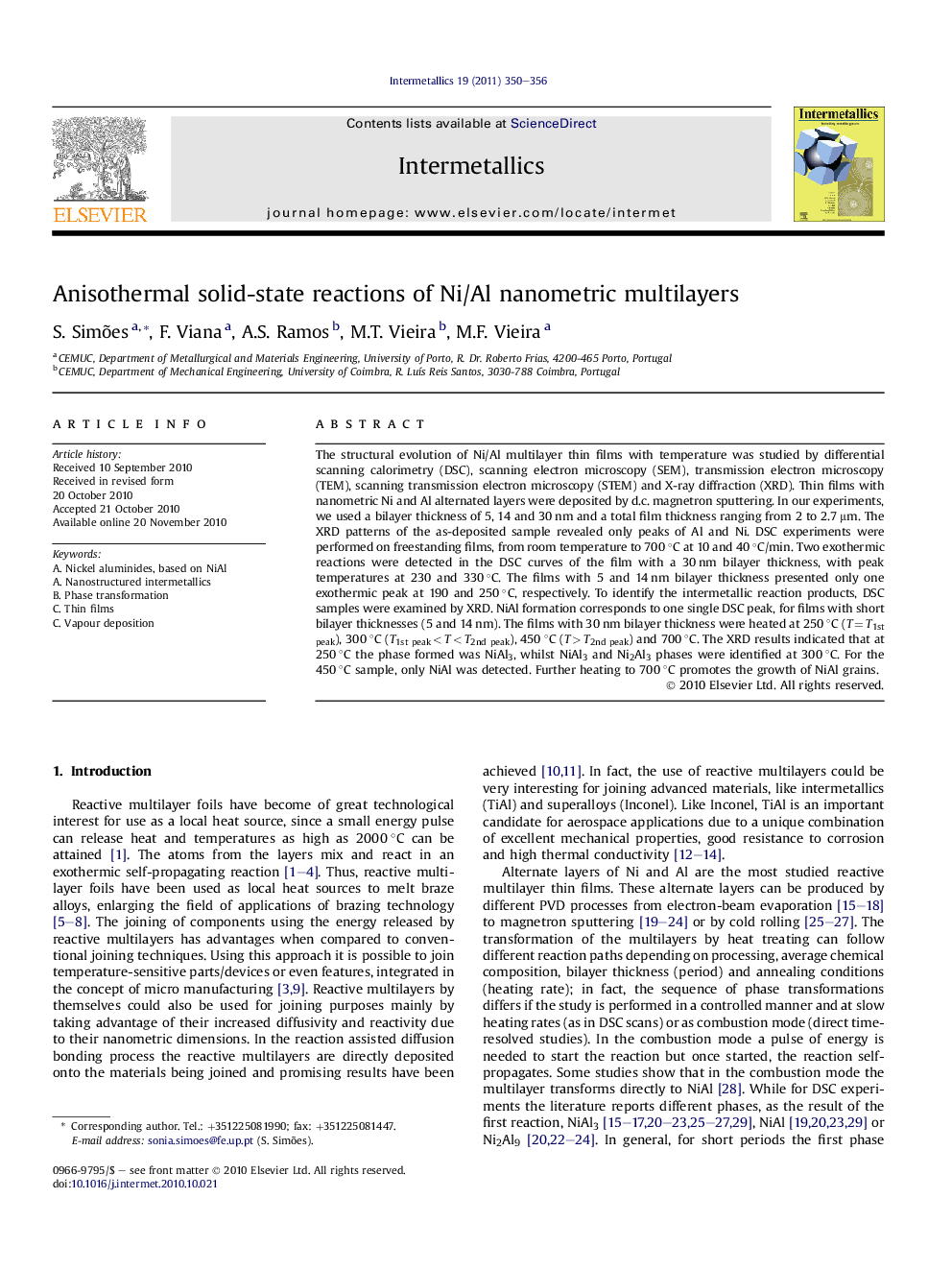| کد مقاله | کد نشریه | سال انتشار | مقاله انگلیسی | نسخه تمام متن |
|---|---|---|---|---|
| 1600953 | 1005181 | 2011 | 7 صفحه PDF | دانلود رایگان |

The structural evolution of Ni/Al multilayer thin films with temperature was studied by differential scanning calorimetry (DSC), scanning electron microscopy (SEM), transmission electron microscopy (TEM), scanning transmission electron microscopy (STEM) and X-ray diffraction (XRD). Thin films with nanometric Ni and Al alternated layers were deposited by d.c. magnetron sputtering. In our experiments, we used a bilayer thickness of 5, 14 and 30 nm and a total film thickness ranging from 2 to 2.7 μm. The XRD patterns of the as-deposited sample revealed only peaks of Al and Ni. DSC experiments were performed on freestanding films, from room temperature to 700 °C at 10 and 40 °C/min. Two exothermic reactions were detected in the DSC curves of the film with a 30 nm bilayer thickness, with peak temperatures at 230 and 330 °C. The films with 5 and 14 nm bilayer thickness presented only one exothermic peak at 190 and 250 °C, respectively. To identify the intermetallic reaction products, DSC samples were examined by XRD. NiAl formation corresponds to one single DSC peak, for films with short bilayer thicknesses (5 and 14 nm). The films with 30 nm bilayer thickness were heated at 250 °C (T = T1st peak), 300 °C (T1st peak < T < T2nd peak), 450 °C (T > T2nd peak) and 700 °C. The XRD results indicated that at 250 °C the phase formed was NiAl3, whilst NiAl3 and Ni2Al3 phases were identified at 300 °C. For the 450 °C sample, only NiAl was detected. Further heating to 700 °C promotes the growth of NiAl grains.
Figure optionsDownload as PowerPoint slideResearch highlights
► Phase formation and microstructural evolution of Ni/Al multilayer were studied.
► Films with a bilayer thickness of 30 nm show two exothermic peaks in the DSC curves.
► First NiAl3 is formed, secondly Ni2Al3 and, finally, NiAl.
► Films with bilayer thickness of 14 and 5 nm exhibit a single exothermic peak.
► The Al and Ni nanolayers evolve into equiaxed nanograins.
Journal: Intermetallics - Volume 19, Issue 3, March 2011, Pages 350–356